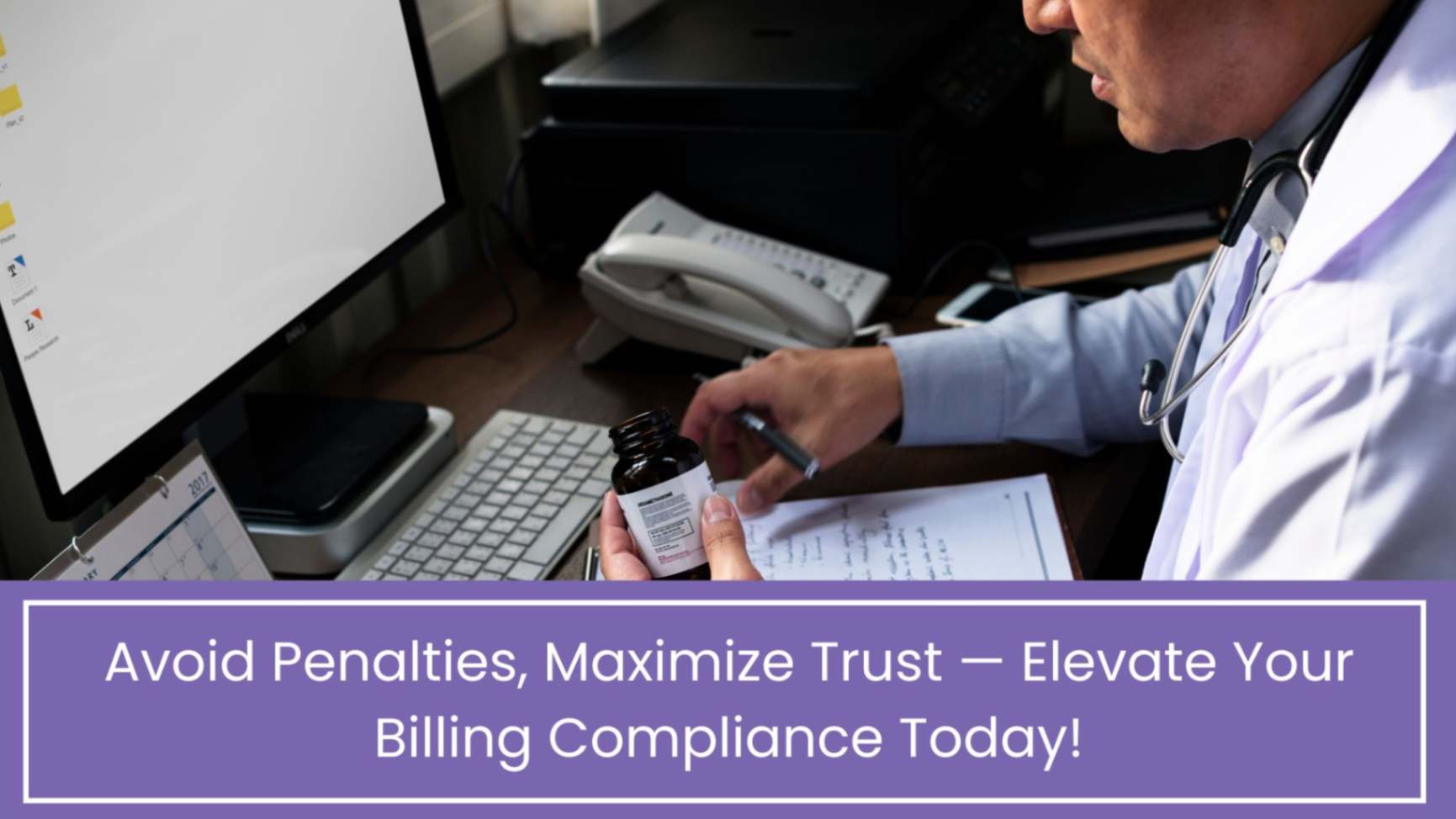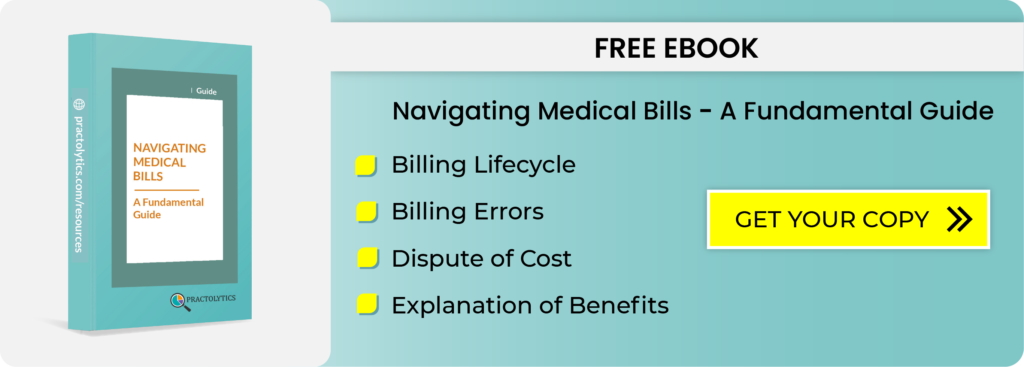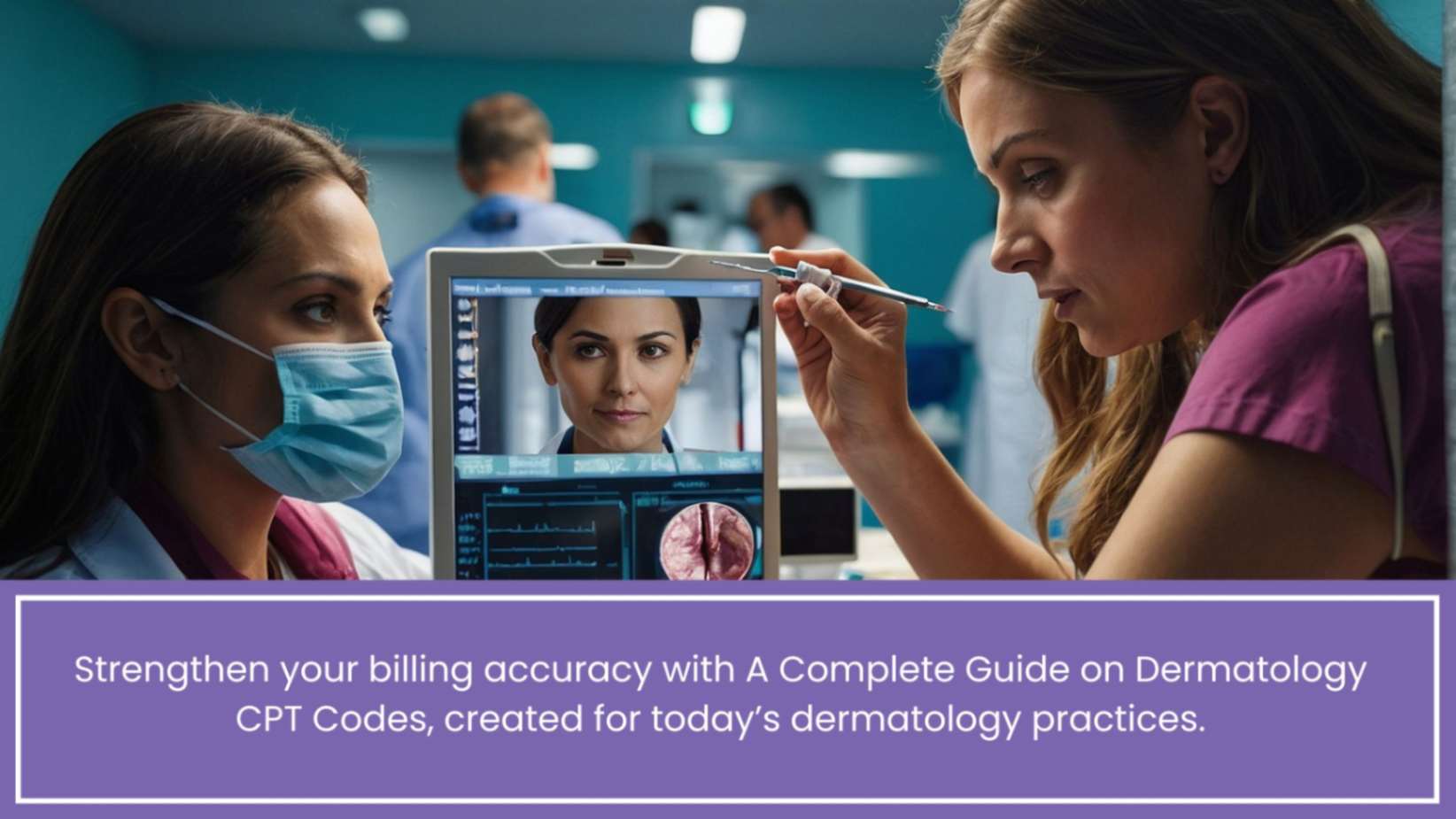Ensuring Compliance in Medical Billing Practices
Even the most dedicated healthcare professional may get chills when they ensuring compliance in medical billing Practices. It conjures up images of enormous documentation, thorough reviews, and the potential for severe financial implications. Audits are not an unusual or sad event in the intricate world of healthcare billing; rather, they are a routine yet necessary part of doing business. Government payers including as Medicare and Medicaid, as well as private insurance companies and corporate compliance departments, perform audits to ensure that all billed services are medically necessary, properly recorded, and thoroughly documented.
There is a lot on the line. A failed audit can result in significant fines, penalties, demands for restitution of already delivered services, and even removal from important payer programs. A negative audit report can permanently impair a practice’s reputation. It may also impair patient trust. Being audit-ready and ensuring billing practices are compliant are critical components of ethical healthcare delivery and financial management. It is not simply a defensive approach.
This blog article will operate as your go-to resource, describing the crucial tactics and preventative actions required to competently and confidently negotiate the complexities of healthcare audits. Fostering a culture of continuous compliance can transform an audit into an opportunity. This transformation allows your organization to demonstrate integrity and operational excellence.
Understanding the Audit Landscape: Types and Triggers
Before you can successfully prepare for an audit, you must understand the various forms audits can take. You must also understand what often triggers these audits. Understanding the “who,” “what,” and “why” of an audit allows you to prepare. This understanding enables you to get ideal results.
Common Types of Audits:
1.Government Payer Audits (Medicare, Medicaid):
Third-party organizations that the Centers for Medicare & Medicaid Services (CMS) hire are known as Recovery Audit Contractors. It is their duty to identify and retrieve inaccurate Medicare payments, including both overpayments and underpayments. They often target high-volume services, coding errors, and issues of medical necessity.
Medicare administrative contractors are in charge of processing Medicare claims. They also perform audits to verify Medicare criteria are met.
The Office of the Inspector General performs audits of government healthcare programs. These audits may result in significant investigations and penalties for fraud and misuse.
Medicaid programs in each state are administered by state Medicaid agencies. They are similar to MACs, but focus on state-specific programs.
2.Commercial payer audits are conducted. Private insurance firms perform these audits. These audits evaluate medical necessity. They also evaluate coding accuracy and contractual compliance. These can occur before or after payment.
3.CMS conducts Targeted Probe and Educate audits. These audits identify providers with high mistake rates or anomalous medical billing practices. These include pre-payment reviews. Educational sessions designed to rectify shortcomings are also included.
4.Internal audits are self-initiated reviews conducted by healthcare organizations. These reviews are carried out by the organization itself. They help identify risks. They also address those risks before external auditors arrive.
Table of Contents
Common Audit Triggers:
Audits are rarely random. Recognizing triggers can help you focus your preventative efforts. These triggers are typical examples of things that might cause problems.
- High billing volume or unusual patterns can draw attention. These patterns, such as billing at the highest E/M levels, are statistically aberrant and may be flagged.
- High denial rates signal problems with your billing or coding methods. This suggests fundamental flaws in your processes.
- Whistleblower complaints are made by disgruntled employees or former employees. These complaints can lead to significant investigations.
- Patients may experience discrepancies on their Explanation of Benefits (EOB) or have direct billing concerns. This can lead to an audit.
- Lack of adaptation to new policy can result in easily identifiable errors. These errors can occur when coding guidelines, payer policies, or regulatory modifications are not integrated.
- Data Mining and Analytics: Payers analyze claims data using sophisticated algorithms. This examination reveals outliers and patterns that deviate from the norm.
Foundation of Compliance: Policies, Procedures, and Training
A strong compliance program provides strong defense against audit results. It is your best defense against audit results. Simply having rules is insufficient; you need a dynamic framework for your billing processes. This framework should guide all aspects of your billing processes. This structure is based on three pillars. These pillars are the foundation of the structure. Let us look at it:
1.These are broad statements that demonstrate your organization’s commitment to ethical behavior and regulatory compliance. They are known as clearly defined policies. They should cover:
- Commitment to accurate coding and billing.
- Unbundling, upcoding, and invoicing for uncompleted services are all prohibited.
- HIPAA compliance and patient data security.
- Compliance with specified payer rules and medical necessity requirements.
- Procedures for identifying and reporting suspected fraud or abuse.
- Standards for complete and timely medical documentation. Policies must be established, easily accessible to all employees, and revised annually to remain current.
2.Meticulous Procedures: These detail how your policies are put into practice – the step-by-step instructions for daily tasks. Examples include:
- Detailed patient registration and insurance verification workflows.
- Protocols for charge capture and coding.
- Step-by-step claim submission processes, including pre-submission scrubbing.
- A clear process for managing claim denials and appeals.
- Guidelines for appropriate record keeping should be clear, succinct, and periodically updated. They should reflect policy or regulatory changes.
3.Comprehensive and continuing training is required. Even the most effective policies and processes are ineffective unless they are understood and followed.
- New recruits in patient care, coding, or billing must take extensive compliance training. This training is required for all new employees in certain positions.
- Refresher training should be held on an annual or semi-annual basis. These sessions reinforce concepts and present new requirements.
- Coders require extensive training on coding guidelines. Front-desk personnel require training on eligibility verification. Providers require training on documentation requirements.
- Documentation of training sessions should include dates, topics, attendance, and assessments. Meticulous records should be kept for all training sessions. This demonstrates dedication to education. It demonstrates your dedication to teaching your personnel.
- Create a climate in which employees are comfortable asking questions. This atmosphere should enable employees to communicate their concerns without fear of penalties.
Actively developing and keeping up these three pillars will help your company establish a solid compliance infrastructure. This proactive approach to compliance shows a company’s ability to resist any audit.
Documentation: Your Primary Defense
Healthcare audits rely on documentation. If something wasn’t documented, it’s assumed it wasn’t done. Comprehensive, accurate, and legible medical documentation is essential for a practice’s defense against audit results. It is the most effective defense against audit results because it meets clinical needs. Auditors will analyze every detail. They will ensure that every service billed, code reported, and amount reimbursed is accurate.
Key Documentation Principles for Audit Readiness:
- The documentation must clearly demonstrate that the service was medically necessary for the patient’s condition. This comprises the symptoms, diagnosis, treatment plan, and the patient’s response to the treatment.
- Entries must be clear and legible. They must also be made during the patient interaction. Avoid using generic templates. Personalize updates for each visit.
- Ensure all service components are included. This includes history, exam, and medical decision-making for E/M services.
- Documentation should be consistent across the patient record. It should be fully aligned with billing codes.
- The rendering provider must sign, date, and validate each entry. Properly signing, dating, and validating entries is essential for the rendering provider.
- Support for modifiers is required. Documentation must explicitly state how modifiers are used. Diagnoses must be accurate and relevant to the procedures performed. Diagnoses must logically align with the procedures billed.
Regular provider education on documentation requirements is critical. Internal chart audits are also essential for maintaining high-quality, audit-proof records.
Coding Accuracy: The Language of Reimbursement
Medical coding converts healthcare services and diagnoses into conventional billing codes. These codes are utilized for invoicing and reimbursement purposes. The accuracy with which these codes are used has a direct impact on reimbursement. Audits favor proper codes. Erroneous coding can result in penalties, refund requests, and denials. It could be either purposeful deception or unintentional error.
Pillars of Accurate Coding:
- Defensibility: Every code must be fully supported by the medical documentation.
- Coding must include services that are clinically essential. Coding must also include services that are justified.
- Payer-Specific Rules: Comply with individual payer rules. Comply with Local Coverage Determinations (LCDs) and National Coverage Determinations.
- Current Code Sets: Use the most recent CPT and ICD-10-CM manuals. Use HCPCS Level II manuals as well.
- Proper Modifier Usage: Correctly apply modifiers to clarify service circumstances (e.g., -25, -59). Misuse is a major audit flag.
- Be aware of bundling edits, such as NCCI edits. Bundling edits can help avoid unnecessary separate invoicing for services within a larger operation.
- Avoid billing for a higher level of service than was actually done or documented. This is fraudulent.
Employing qualified professional coders is critical to ensuring accuracy. Regular internal coding audits, strong provider-coder contact, and using up-to-date coding software are also critical.
Proactive Monitoring: Internal Audits and Data Analysis
Acting as if an audit is imminent is a good strategy for preparation. This will help you get ready for the audit. You can find and fix problems before external auditors do. Proactive monitoring measures such as internal audits and detailed data analysis can be beneficial.
- Internal audits involve examining a random sample of claims and charts on a regular basis (for example, quarterly). Use external audit processes to identify errors in documentation, code, and policy compliance. Record all conclusions and remedial measures.
- Data analysis: Make use of your billing and practice management software to:
- Analyze rejection Trends: Find out which payers are problematic, which providers have a high rejection rate, or the most frequent grounds for denials.
- Monitor E/M Utilization: Compare your E/M leveling patterns to national norms. Serious differences could attract notice.
- Examine modifier usage. Keep track of the frequency and proper use of frequently audited modifications.
- Benchmark performance. Evaluate your practice’s denial rates. Evaluate your practice’s coding patterns in relation to industry norms.
These insights enable you to create focused plans for corrective action. You can also provide specific instructions and streamline procedures to ensure continued progress.
A strategic approach to responding to an Audit!
Receiving an audit letter could be upsetting. However, it is vital to answer in a calm, cool, and smart manner.
- Check the audit’s legitimacy. Recognize the auditor and understand its scope, including the dates, services, and specific issues. Note all deadlines.
- Centralize Communication. Assign a single, informed individual as the auditor’s exclusive point of contact.
- Don’t volunteer extra information. Give only what is asked for. Keep copies of your records for your records. Submit requested documents in an index-based, well-organized fashion.
- After an audit has begun, never add to, change, or destroy any billing or medical documents. This is illegal.
- Seek Expert Advice: Hire a respectable external audit company or legal counsel with expertise in healthcare legislation for intricate or high-stakes audits.
- Examine the results and make a strategic appeal: Examine every audit finding in detail. If you disagree, be aware of your appeal rights, follow the dates, and draft a well-supported, fact-based appeal that is backed up by payer policy and supporting paperwork.
Conclusion:
Preparing for audits is a continuous commitment. It supports the moral and financial stability of your firm. You can create a strong defense against any audit by adhering to strict regulations and implementing thorough procedures. This includes providing thorough training, maintaining flawless documentation, ensuring accurate code, and performing proactive monitoring.
This method fosters a widespread compliance culture. It does so within your organization. Compliance is effortlessly integrated into day-to-day operations. This integration eliminates stress and costly mistakes. This integration increases revenue cycles. It also frees up your team’s time to devote to providing excellent service. Investing in strong compliance ensures that your organization’s sustainability over the years. This guarantees the long-term viability and profitability of your practice. It also helps to maintain stability and reputation. Accept it and use compliance as a roadmap to a successful future.
Audits are more than simply regulatory duties in today’s complex healthcare environment; they are a reality that every practice must deal with. This blog provides a detailed guide on preparing for audits and guaranteeing billing compliance. Learn about the many types of audits (Medicare, Medicaid, and commercial), frequent triggers, and how taking proactive steps can help you avoid costly penalties. Learn the value of clear policies, detailed documentation, correct coding, and regular internal audits. Understand how to strategically respond to an audit notice, as well as the importance of establishing a compliance culture. This guide enables healthcare businesses to turn audit preparation into a strength by providing extensive insights and concrete tactics that improve integrity, reduce risk, and safeguard income. Stay ahead of potential issues and maintain your practice’s financial stability, operational efficiency, and audit readiness.
ALSO READ – 9 Key Factors for Successful Transition to Telehealth Practice
Talk to Medical Billing Expert Today — Get a Free Demo Now!






